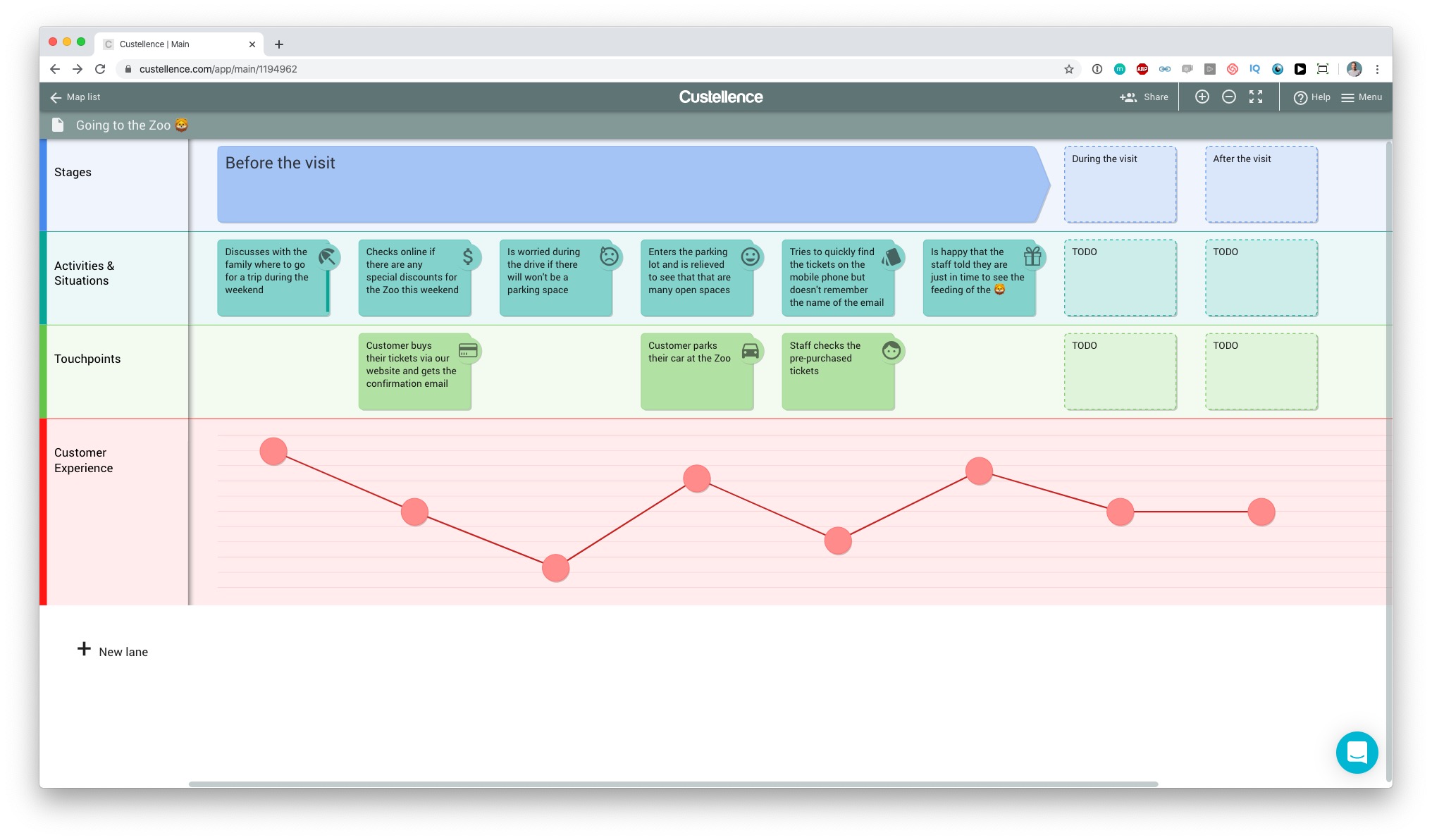
Okay great, you want to create a customer journey map. Not just any customer journey map...
A journey map that's actually going to help you create a better experience for customers and value for your organisation.
To craft this map you want to know how to map touchpoints the right way.
More...
Touchpoints are the moments where your customers interact with your organisation. For example when your customer calls you with a question, looks for information on your website or steps into building.
Now you might be tempted to base your journey map on these touchpoints. This seemingly makes a lot of sense as you know when a customer interacts with you. You have evidence of this.
Touchpoints aren't customer centric
A lot of people who craft their first journey maps this way where touchpoints are the leading aspect. But there are really big problem with this approach.
The problem is that when you only map touchpoints you're still taking an inside out perspective.
You're projecting your internal processes on your customers. You're still not really stepping into the shoes of your customers.
So even after you've invested your time, love and energy into crafting this map you're still going to miss key moments in the journey that are truly matter to your customer.
At best you're going to end up with a disappointing map that doesn't give you any valuable insights... At worst you're going to make the wrong decisions based on this journey map.
And all this just because you've used touchpoints in the wrong way.
But fortunately there's quite an easy fix to this.
How to use touchpoints the right way
As mentioned earlier touchpoints are the moments of interaction between you and your customers. This interaction always happens through an interface or channel.
Channels are things like your staff, your website, your social media accounts, etc.
So now let's take a look at a customer journey map where touchpoints are the leading element.

A journey map solely based on touchpoints (click to enlarge)
When you see this journey map there's really nothing wrong with it at first glance.
The journey makes complete sense right? But it's missing something.
In the practical guide to customer journey mapping (coming soon) we explain that journey maps should always be based on customer activities and situations.
So let's revise this journey map and look at the difference.

A journey map based on customer activities and situations (click to enlarge)
As you can see this map reflects much more closely how your customer actually experiences the journey.
Yes, touchpoints are still an important part of this journey map but they aren't leading anymore.
There are many moments in the journey where your customer isn't interacting with your organisation. And those are exactly the moments that you want to uncover as they give a lot of insights on how you can improve the overall experience.
For example in our going to the zoo journey you might want to look into ways how you can make the ride to the zoo already part of the experience. This might help increase the upfront excitement and reduce stress at the cash registers.
Here is how you easily spot the mistake
How do you know a journey map is purely based on touchpoints? There are two strong indicators that usually give it away:
- The journey map is missing a customer activities and situations lane completely.
- If there is a customer activities and situations lane, every activity is a moment of interaction with the organisation.
So the next time you see a customer journey map keep this in mind and see if you can spot this mistake.
The important next step
Now that you know how and when to use touchpoints the right way, the journey maps you're going to create are going to be more valuable. You're going to find better insights quicker into how you can actually improve the customer experience.
Your most important job now becomes uncovering those hidden customer activities and situations.
If you want to learn how to do that in an effective way, check out the Customer Journey Mapping Essentials Masterclass next.
